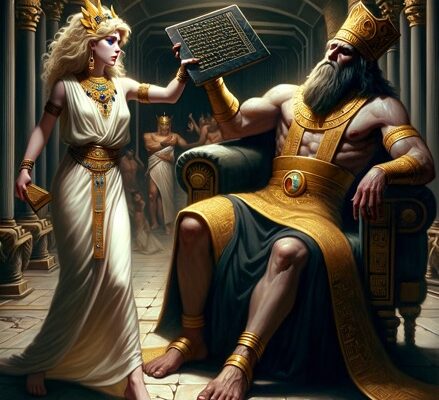If oral tradition corrupts, how are we to understand the Eden Narrative when compared to its earliest counterpart?
The Getting of Knowledge occurred in what most know of as The Cradle of Life. In Southern Mesopotamia, life for the people of this region during the late Copper Age would be difficult for a modern civilization to fathom. Being fresh out of the New Stone Age, they had barely begun to participate in a functioning society. Respecting a neighbor, an elder, a law, or tradition, was something not widely practiced. A society with little to no comprehension of what moral or immoral character was. It was only after the getting of knowledge had the peoples of the prehistoric world begun their transition towards civilized life.
While most are aware of the Adam and Eve account from Genesis, its Sumerian counterpart recorded in the 3rd millennium BCE offers some interesting insight. In the Inanna and Enki myth, the Lord possesses a tablet consisting of approximately 100 divine articles referred to as the MEs, or the Tablet of Destinies. It was a collection of social practices and ideas safeguarded by the Elites, aka the Gods or Lords. Some of these concepts were honesty and deceit, essentially an understanding of good and ill intention (Knowledge of Good and Evil). Other concepts or ideas mentioned in the Tablet of Destinies were technology, religion, art, culture, writing, and other foundational constructs that influence the inception of a civilization. According to the literature, all because of a young woman who tended to the garden of the gods, having deceptively attained the Tablet of Destinies (Fruit of Knowledge), then fled to her city Uruk.
Comparable to Eve taking the fruit then offering it to Adam, the Sumerian account implies the Lady of Heaven(Eve) offered this knowledge to the first group of slaves(first man). In the Seven Tablets of Creation text, the God of Creation states “let us make a slave master, Man will be its name.” Collectively, the creation of man, a woman offering knowledge to that first man, and that knowledge containing an understanding of good and evil, is without a doubt the same series of events mentioned in Genesis.
When reviewing the Abrahamic and Sumerian accounts together, and factor in chronology and geography, we get an entirely new understanding of what this event refers to. The “Fall of Man” coincides with the historical birth of civilization because one event led to the other. When the elite class, or gods, withheld the divine concepts from the lower classes, and this information was leaked, the model of civilization began to spread. The idea of Godship, Kingship, Ladyship, as documented on the Tablet of Destinies, made its way to neighboring cultures, to be practiced by those without consent of the gods. From Sumer, the model of civilization spread to their Semitic neighbors in Kish, all the way through the Levant and into Egypt, and through Anatolia and into the Cyclades.

